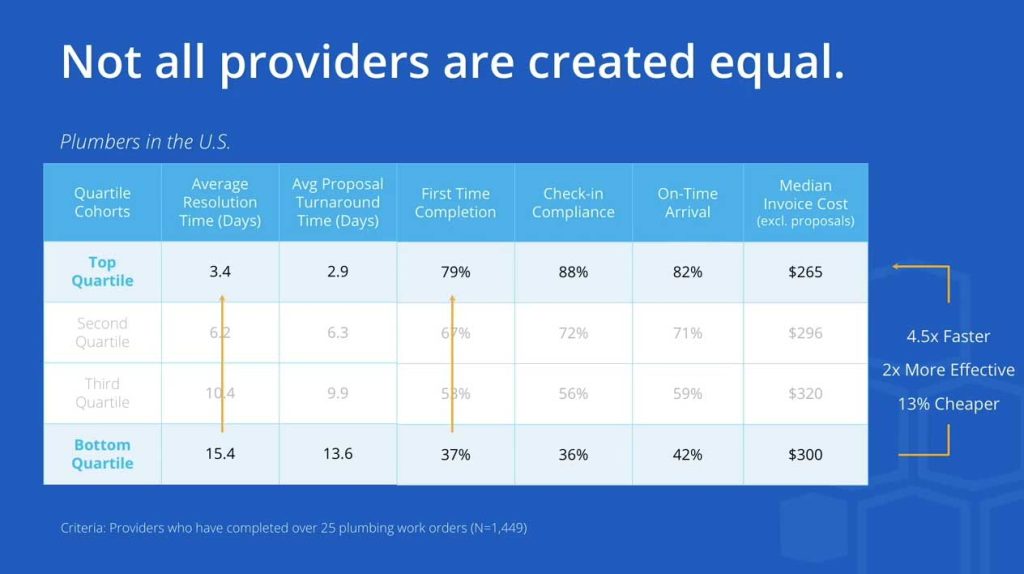Top Asset Management Software Features to Optimize Performance

Discover key asset management software features that help reduce costs, improve visibility, and keep your facilities running at peak performance.
Many modern industrial and commercial facilities manage an intricate web of assets across locations, departments, and digital environments. As a result, organizations rely on increasingly powerful and flexible asset management software features to keep operations running smoothly.
The right tools make a measurable difference across your organization, from minimizing downtime to improving asset utilization and tracking costs. Whether you’re managing HVAC units, software licenses, or spare parts inventory, a purpose-built platform keeps your team informed and proactive.
The best asset management systems combine automation, analytics, and mobile accessibility to give you full visibility into how your organization’s assets are performing. Learn more about how asset management software can help reduce inefficiencies and keep your facilities running at peak performance.
Core Functions for Managing Physical Assets
Keeping tabs on your organization’s physical assets is foundational to long-term performance. Whether you’re overseeing HVAC units, refrigeration systems, or power tools, a modern asset management strategy helps you track what you have, where it is, and how it’s used.
Today’s enterprise asset management software typically includes an array of built-in asset tracking capabilities. These tools use barcodes, QR codes, or RFID tags to create a digital trail for every asset. That means teams can continuously monitor status, location, and usage patterns without relying on outdated manual processes or Excel sheets.
Inventory management is another essential feature. With real-time visibility into spare parts and consumables, your team can avoid stockouts, reduce over-ordering, and stay ready for scheduled maintenance or urgent repairs.
Some platforms also include audit and verification tools, which help facilities managers validate asset records and maintain compliance requirements. These capabilities reduce human error and support stronger planning and asset utilization across your entire operation. The functions that follow support a strong asset management strategy.
Smarter Maintenance and Scheduling
When done right, maintenance is one of the most controllable cost centers in any facility operation. Good asset management software makes it easier to plan, assign, and execute maintenance tasks without delay or guesswork.
Built-in maintenance scheduling tools let you create preventive maintenance routines based on time, usage, or condition thresholds. By staying ahead of potential equipment failure, you can extend asset life, improve maintenance efficiency, and avoid costly reactive maintenance. Many platforms also include auto-generated work orders and calendar reminders that keep technicians on track and prevent critical tasks from slipping through the cracks.
Real-time alerts and notifications help your team respond quickly to unexpected issues, such as a low inventory threshold or an urgent asset downtime event. This kind of proactive maintenance management helps reduce maintenance costs, improve equipment performance, and support ongoing regulatory compliance.
To see how maintenance scheduling principles work in practice, explore our approach to work order management.
Asset Lifecycle and Cost Management
Every asset’s life has a beginning, a middle, and an end. Asset management software helps you track this full lifecycle, from procurement to retirement, so your team can make smarter decisions at every stage.
Lifecycle planning tools allow facilities managers to forecast replacement and retirement needs, identify underperforming assets, and reduce unnecessary capital expenditures. Tracking usage trends and maintenance history makes it easier to avoid surprise failures and plan for timely upgrades that support asset performance.
These tools also contribute to cost control. A clear picture of your asset portfolio helps prevent over-purchasing, manage warranties, and support financial planning based on actual needs. With real-time asset data analysis, you can get insights into maintenance and operational costs, empowering informed decision-making and long-term cost savings.
Whether you’re managing capital equipment or fleet vehicles, the ability to analyze total cost of ownership and future needs is critical. Our guide to spend optimization explains how lifecycle insights support smarter budgeting.
Advanced Decision-Making and Reporting
Facilities teams can’t afford to operate in the dark. Whether you’re managing a handful of locations or dozens, analytical tools and customized reports turn raw asset data into actionable insights.
Most asset management platforms offer built-in dashboards that track everything from asset usage and downtime to maintenance spend and replacement schedules. With access to historical data, your team can:
- Identify recurring issues and failure patterns
- Monitor actual vs. expected maintenance costs
- Forecast asset replacements based on usage trends
- Generate audit-ready customized reports
These insights enable informed, data-driven decisions that improve long-term asset performance. Our guide to reporting and analytics shows how robust data tools can drive results.
Security, Compliance, and Risk Mitigation
Managing a large asset portfolio means managing risk, from cyber threats to regulatory scrutiny. Asset management platforms reduce risk exposure by providing data security features and built-in compliance tools that support your team at every level. A strong system will offer security and compliance capabilities such as:
- Role-based permissions to ensure that each team member has only the access that they need to perform their duties.
- Access controls that limit sensitive asset information changes to authorized personnel.
- Secure network protocols to help keep out hackers and other unwanted visitors.
- Data encryption to thwart attempts by unauthorized actors to view sensitive data.
- Documentation tools that simplify inspections, track certifications, and support compliance requirements tied to safety, labor, or environmental regulations.
By using a platform that supports both regulatory compliance and secure data practices, your organization can confidently manage risk while continuing to scale operations. Learn more about key compliance risks and how the right tools can help you avoid them.
Managing Digital Assets and Licenses
Critical assets extend well beyond just the physical. As organizations adopt more digital tools, tracking and managing software licenses becomes essential for operational control and meeting compliance requirements.
Software asset management (SAM) features help you monitor which tools are in use, where licenses are installed, and when they expire. This prevents overbuying, underutilization, and accidental violations of licensing terms, which can lead to fines or audit complications.
Centralized license tracking also supports smarter renewals and budgeting. With visibility into actual usage, your team can make better decisions about which tools to scale, consolidate, or eliminate.
Some asset management systems go further by integrating SAM data into broader lifecycle reporting. This creates a more complete picture of both physical and digital assets, helping you manage assets holistically across your entire operation.
By diligently monitoring software as well as equipment, your organization can reduce waste, manage risk, and make informed, cost-effective decisions.
Mobility and Customization at Scale
Managing assets across multiple locations requires more than desktop access. Today’s top platforms support mobile accessibility, so teams in the field can view asset records, submit updates, and complete routine tasks in real time — right from their mobile devices.
Features like barcode or QR code scanning make it easy to retrieve asset details during inspections, repairs, or inventory counts. This helps technicians stay efficient and reduces the risk of delays caused by missing or outdated asset information.
On the configuration side, customizable fields, dashboards, and workflows allow you to tailor the platform to your unique needs. Whether you’re tracking fleet vehicles, refrigeration units, or digital signage, the right platform grows with your operations.
This flexibility is especially valuable for facilities teams supporting multiple brands or geographies. Our guide to mobile facility management explains how mobile-first tools support scalable operations.
These capabilities enhance your maintenance and budget-management processes. From the security a reliable asset management system provides to the tools for keeping documentation audit-ready, your organization can benefit from a platform that integrates all of these functions.
Unlock Efficiency and Cost Savings With Smarter Asset Management
The right asset management program can do more than monitor tools and equipment. It can also help your team reduce waste, improve efficiency, and make more informed decisions. With ServiceChannel, you get a centralized platform that simplifies everything from routine maintenance to compliance reporting.
By investing in a cost-effective solution that supports real-time monitoring, mobile access, and strategic reporting, your organization can gain control over both physical and digital assets. The result is increased performance, lower costs, and a more proactive approach to maintenance and operations.Whether you’re supporting a single facility or sites across multiple regions, ServiceChannel helps you implement a scalable asset management strategy that improves visibility and drives performance.
To see what smarter asset management looks like in action, request a demo and explore how ServiceChannel can support your goals.



